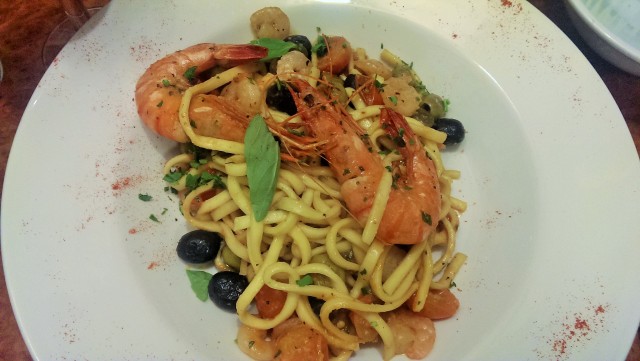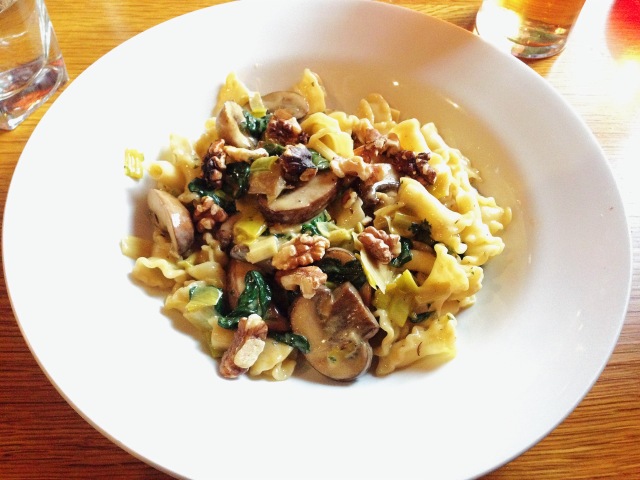The single question I get asked most often, apart from where to eat, is “what do the ER ratings mean?” I’ve often wondered whether to devote a separate post to this, or to leave it an enigma. The thing is, lots of people like ratings. They want to know whether a film that’s just come out is a 4 star film or a 5 star film, and I can see why: back when I read reviews but didn’t write them I wanted to know that too. Now that I write one every week, I can see it’s more complicated than that. How can you sum a whole experience up in a mark out of ten? If I could go back and start again, I’d be tempted to miss out ratings altogether. But would I go through with it? After all, they might be difficult to decide on, they might prompt head-scratching and disagreement but, like I said: lots of people like ratings.
I’ve always hoped that the ratings on ER work a bit like those on music website Pitchfork. I can read a Pitchfork review of an album that’s rated, say, 8.0 and absolutely know that it won’t be my cup of tea (because of references to, for example, Krautrock – how exciting!), or I can read a 6.2 and rush out and buy the CD. It’s no different with restaurants: the ratings are an interesting conversation point, but there are so many other factors involved. Is it your kind of food? Is it going to be any good for vegetarians? Is it buzzy/quiet/fancy/unpretentious enough for you? Is getting to the location a faff?
Another thing I often get is people saying that my reviews are too harsh, or too kind (sometimes I get both bits of feedback about the same review) or people saying that the review doesn’t read like the rating, that the words feel like an 8 but the rating says 7. Well, I suppose if I’ve been somewhere I liked and you didn’t you’ll think I’m harsh. If I’ve raved about somewhere that left you unmoved you might think I’m too charitable.
A complicating factor is that, over the time I’ve done this, I’ve felt increasingly like being constructive. These are small independent places, mostly, and they’re trying their best – even if their best isn’t that good. I don’t have the appetite for hatchet jobs, and I know that’s disappointing because, like ratings, people really like them. So, and hopefully this will be my last word on the subject of ratings: if you read a review and it makes you feel like trying the restaurant, do. If it doesn’t, don’t. Does that sound fair enough?
This has all been uppermost in my mind because I had such a disappointing meal at River Spice (you may have scrolled to the end, in which case you’ve probably already figured that out). It might have been especially disappointing because I arrived with high expectations: several people had recommended River Spice to me as equal to House Of Flavours, my current benchmark for Indian restaurants in Reading. Enough people recommended it, in fact, and in glowing enough terms that I spent a lot of the meal wondering if it was my fault rather than the restaurant’s.
Early signs were good – it’s an interesting location for a restaurant, at the end of the Caversham Road, facing onto the river (I can see it would be a lovely spot in summer). The room is clean and modern with nice big tables, good cutlery and crisp white napkins. The welcome was polished and professional and although only a handful of tables were occupied on a Monday night, the other diners did seem to be regulars. The menu made me look forward to what lay ahead, full of dishes I’ve not seen at other restaurants in town: tandoori duck and monkfish, grilled ostrich. There were plenty of seafood and fish curries, too. The conventional options were relegated to a section near the end called “all time favourite dishes”. Order them if you must, but we can do much better seemed to be the implication.
Well, maybe they can but that wasn’t my experience. The poppadoms were perfectly pleasant – light, not oily, easily broken into shards – and gave no hint of the disappointments to follow. I know a lot of people think bad, stale poppadoms suggest a bad restaurant (the culinary equivalent of a canary in a coal mine, perhaps) but sadly the reverse isn’t true. It was downhill from there.
King prawn suka, for instance, sounded so delicious on the menu: king prawns in tamarind, garlic, honey, chilli, salt and turmeric. On the plate it looked and tasted unremarkable – two prawns coated in a red gloop, as sweet and fruity as jam. I love tamarind sauce, but there was nothing to offset it and certainly none of the complexity promised by the rest of the ingredients. The rest of the plate was padded out with lukewarm salad – maybe that distracts some of the diners from the fact that they’ve just paid over six pounds for two prawns and something disconcertingly like cranberry sauce, but for me it had the opposite effect.
The other starter was chicken nakazat, tandoori skewers flavoured with chicken and nutmeg. It was two decent sized pieces of chicken with a strong taste of garlic and a faint whiff of disconcerting cheese – they looked cheesy and tasted cheesy even though I couldn’t see, from the menu, how this would have been possible. The menu said this dish was “delicately spiced” but I think they may be understating just how delicately. It wasn’t actively bad but I couldn’t see how anyone could get excited about it, especially if they’d tried something similar at Bhoj, House Of Flavours or indeed Pappadams.
The food was so dull to eat, so dull to recall and so dull to write about that I can’t help but feel this must also be dull to read. It’s not going to get any better, I’m afraid: the mains were pretty mediocre too. The best of them was the gost kata massala, braised lamb with sliced onions, ginger, garam masala and garlic. When it arrived I had my reservations, mainly because the lamb was in such thick slabs that it called for a trust in the kitchen which, by this stage, I just didn’t have. As it turned out, the lamb pulled apart nicely, not quite as tender as it could have been but nothing for the molars to trampoline on either. The sauce was nicely savoury but again, was bland. Almost like gravy, in fact, and this felt more like a casserole than a curry – that might have been all very well on another night but it really didn’t feel like what I’d signed up for.
The low point was the Goan fish curry. I was impressed to see monkfish appear prominently on the menu, rather than the softer fish (mahi mahi or the like) you often see on Indian menus, and the prospect of having it cooked skilfully in a tandoor was an exciting one. The reality of having it cooked by River Spice, however, wasn’t: the five (count them – I did) pieces of fish had a texture somewhere between cotton wool and mattress. They sat forlornly in the middle of a big puddle of yellow creamy sauce – again, emphasising just how far this dish was from getting your money’s worth (thirteen pounds, if I’m not mistaken). The sauce was thin and bland without any of the sweetness of coconut milk or the kick of any spice. Again, the menu said it was prepared with “delicate” spices: on that basis perhaps I can legitimately say that I delicately eat five portions of fruit and vegetables a day, delicately exercise or am delicately learning French.
The ultimate sauce test is whether you want to mop up the rest with a naan or rice. The lamb dish passed – just – and the Goan fish curry failed with flying colours. The pilau rice doesn’t really merit a mention, and nor does the keema naan, except to say that it was disturbingly circular and not the more irregular shape of naan I have eaten elsewhere. Make of that what you will: by this point I was almost past caring. The wine – a glass of malbec and a glass of shiraz – were okay. Maybe if I’d drunk a little more I’d have disliked the food a little less. Desserts were all ice cream based but I really felt like I’d spent quite enough money at River Spice already: the whole lot came to just over fifty pounds, not including tip.
Service started out quite stand-offish: despite only two other tables in the restaurant it felt like it took a very long time to get noticed to order food. Ironically, it was roughly at the point where I realised it had been a bit of a wasted evening that they started being really nice to us. It’s almost like they knew I was going to go home and write this and they wanted to make me feel an utter shit about it. If so, I’d say they can count it as a partial success – I do feel like I’ve just spent fifteen hundred words kicking a puppy but average food is average food, even when it’s dished up by nice people. You could ask why I didn’t send any of it back, but the truth is none of it was inedible. It just never felt especially worth eating.
So, you’ll read all this and look at the rating and think I was being kind. Or you’ll have been to River Spice and you’ll think I’ve been harsh. That’s the nature of these things. But nothing I had was dangerous, or offensive, or badly cooked: it was just dull. Would I go back? No. Reading has too many Indian restaurants for anyone to have to put up with mediocre food. Maybe they were having an off night, perhaps I was, but the main memory that sticks with me is that Goan fish curry – rarely in the field of Reading dining has so much been spent on so little food for so much disappointment. So have I been too harsh? If you really want to find out then go for yourself. But I can’t say I recommend it.
River Spice – 6.1
206 Caversham Road, RG1 8AZ
0118 9503355

















